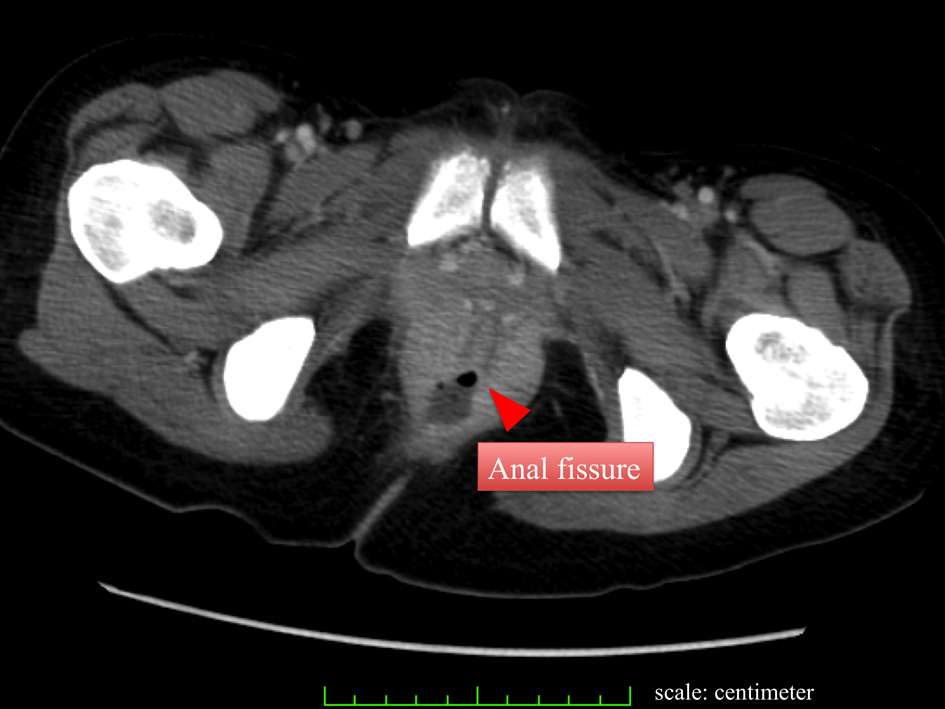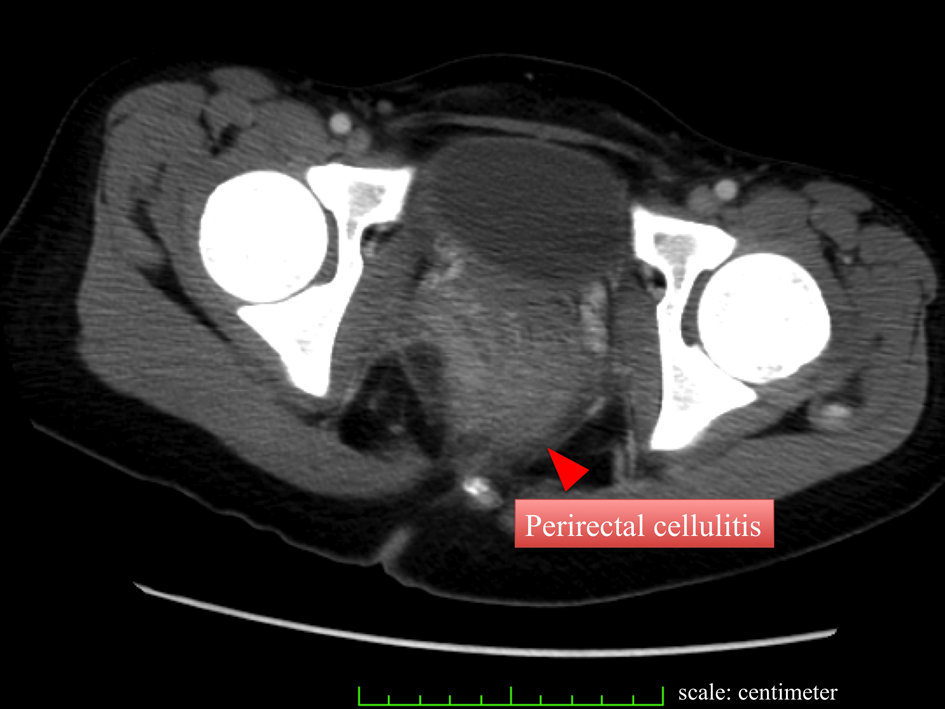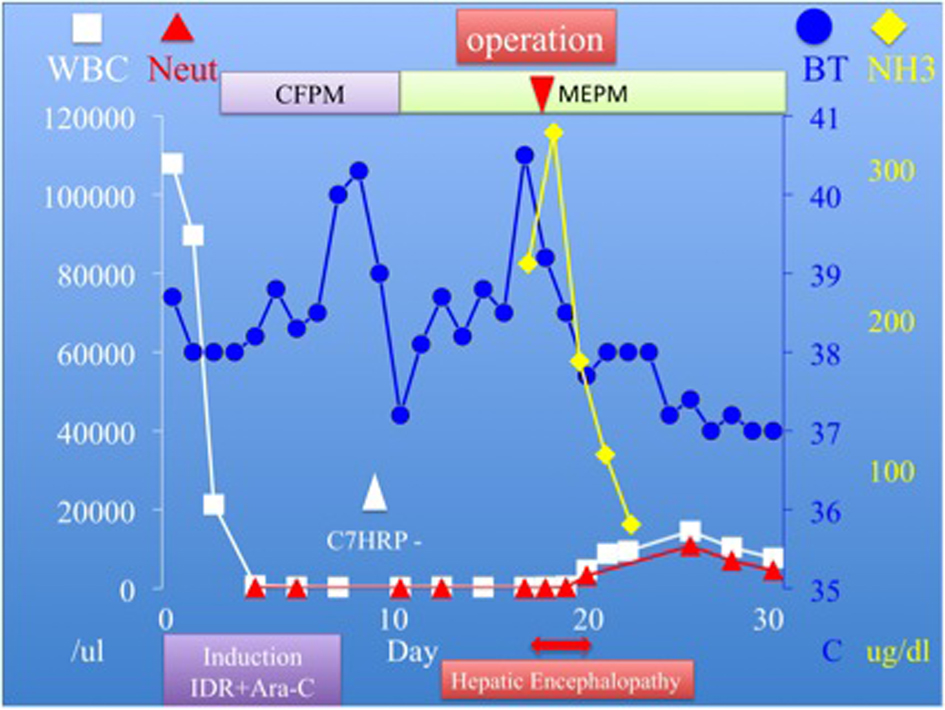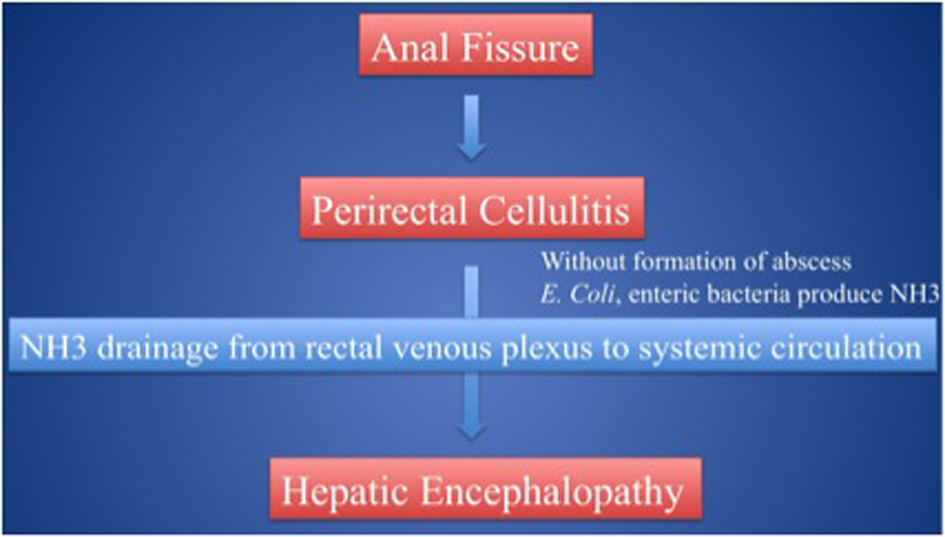
Figure 1. CT reveals anal fissure without a significant abscess formation.
| Journal of Medical Cases, ISSN 1923-4155 print, 1923-4163 online, Open Access |
| Article copyright, the authors; Journal compilation copyright, J Med Cases and Elmer Press Inc |
| Journal website http://www.journalmc.org |
Case Report
Volume 4, Number 1, January 2013, pages 56-60
Successful Surgical Rescue of Hepatic Encephalopathy due to Anal Fissure in the Case of Acute Myeloid Leukemia
Figures




Tables
| PT: prothrombin time; APTT: activated partial thromboplastin time; HBs-Ag: hepatitis B surface antigen; HCV-Ab: hepatitis C virus antibody; HIV-Ab: human immunodeficiency virus antibody. | |
| White blood cell | 107.9 × 109/L |
| Red blood cell | 3.42 × 1012/L |
| Hemoglobin | 11.0 g/dL |
| Platelet | 30 × 109/L |
| PT sec | 14.5 sec |
| APTT sec | 31.4 sec |
| Total protein | 7.8 g/dL |
| Albumin | 4.7 g/dL |
| Total Bilirubin | 0.6 mg/dL |
| Asparate aminotransferase | 26 IU/L |
| Alanine aminotransferase | 42 IU/L |
| Gamma glutamyl transpeptidase | 22 IU/L |
| Lactate dehydrogenase | 348 IU/L |
| Amylase | 42 IU/L |
| Blood urea nitrogen | 8.4 mg/dL |
| Creatinine | 0.56 mg/dL |
| Na | 142 mEq/L |
| K | 3.4 mEq/L |
| Cl | 103 mEq/L |
| Glucose | 104 mg/dL |
| HbA1c | 6.4% |
| Immunoglobulin G | 1,497 mg/dL |
| Immunoglobulin A | 176 mg/dL |
| Immunoglobulin M | 140 mg/dL |
| HBs-Ag | Negative |
| HCV-Ab | Negative |
| HIV-Ab | Negative |
| Grade 1 | Trivial lack of awareness, Euphoria or anxiety |
| Shortened attention span | |
| Impaired performance of addition | |
| Grade 2 | Lethargy or apathy |
| Minimal disorientation for time or place | |
| Subtle personality change, Inappropriate behaviour | |
| Impaired performance of subtraction | |
| Grade 3 | Somnolence to semistupor, but responsive to verbal stimuli |
| Confusion, Gross disorientation | |
| Grade 4 | Coma (unresponsive to verbal or noxious stimuli) |
| PT: prothrombin time; APTT: activated partial thromboplastin time. | |
| White blood cell | 0.4 × 109/L |
| Red blood cell | 2.56 × 1012/L |
| Hemoglobin | 8.1 g/dL |
| Platelet | 37 × 109/L |
| PT sec | 16.5 sec |
| APTT sec | 37.7 sec |
| Total protein | 6.6 g/dL |
| Albumin | 3.0 g/dL |
| Total Bilirubin | 1.2 mg/dL |
| Asparate aminotransferase | 40 IU/L |
| Alanine aminotransferase | 148 IU/L |
| Lactate dehydrogenase | 92 IU/L |
| Amylase | 42 IU/L |
| Blood urea nitrogen | 14.3 mg/dL |
| Creatinine | 0.49 mg/dL |
| Na | 140 mEq/L |
| K | 4.6 mEq/L |
| Cl | 104 mEq/L |
| Glucose | 111 mg/dL |
| HbA1c | 6.4% |
| Ammonia | 235 µg/dL |
| Classification and grading In the World Congress of Gastroenterology 1998 in Vienna. |
| Hepatic encephalopathy is subdivided in type A, B and C |
| Type A (acute) describes hepatic encephalopathy associated with acute liver failure |
| Type B (bypass) is caused by portal-systemic shunting without associated intrinsic liver disease |
| Type C (cirrhosis) occurs in patients with cirrhosis |